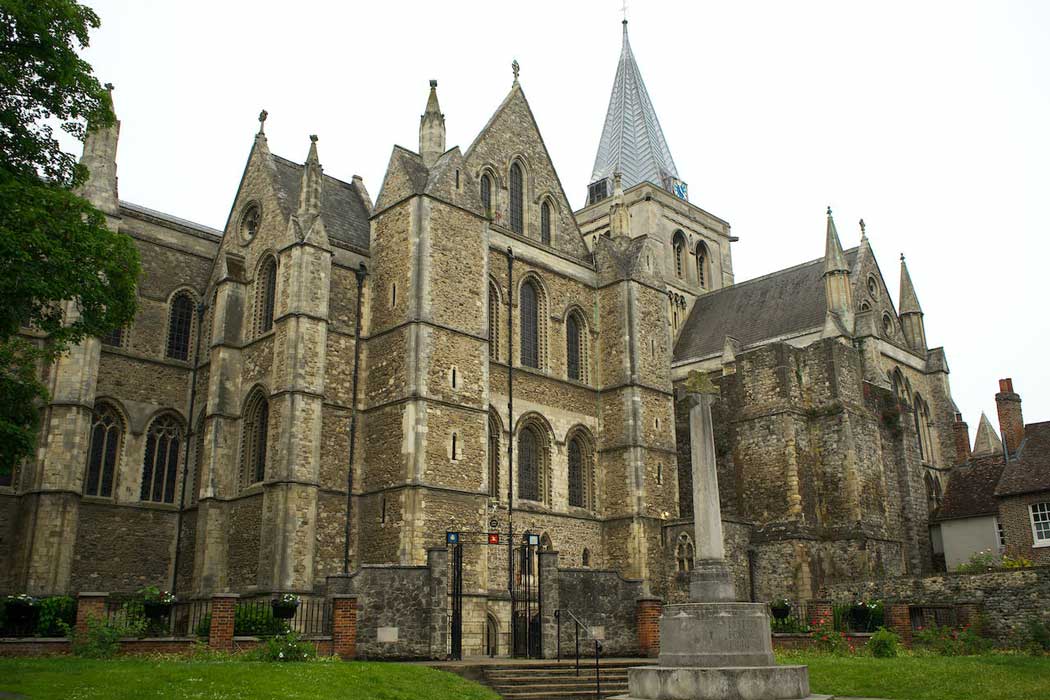Rochester Cathedral is England’s second-oldest cathedral with a rich history dating back to 604. Originally founded as a Benedictine monastery, the Grade I listed building dates mostly from the Norman period and it an excellent example of the architectural style of this period.
Today, Rochester Cathedral serves as a place of worship and is open to visitors seeking to explore its architectural heritage. The cathedral offers a tranquil environment for reflection, and guided tours provide insights into its historical, cultural and religious importance. Additionally, visitors can see its stained glass windows and marvel at the intricate details of the architecture.
Rochester Cathedral receives fewer visitors than most of England’s other cathedrals, which can make a visit to this cathedral feel more authentic than a visit to other, more touristed, cathedrals.
What to see at Rochester Cathedral
Visitors to Rochester Cathedral can expect to encounter a historically rich site with architectural features dating to Norman times. The cathedral, originally established as a Benedictine monastery in the early 7th century, boasts a Norman-style structure built between 1079 and 1238. Architectural highlights include the 12th-century west front and a well-preserved medieval chapter house, showcasing the craftsmanship of their respective periods.
Visitors can appreciate the intricate details of stained glass windows and the overall architectural evolution of the cathedral. Other notable features include the 12th-century west front and the well-preserved medieval chapter house.

Visiting Rochester Cathedral
Rochester Cathedral has a quiet setting just behind High Street in the centre of Rochester. From here, it is just a few minutes walk to Rochester Castle and other attractions in central Rochester, including Eastgate House, the Guildhall Museum and the Huguenot Museum, are no more than a five-minute walk away.
The cathedral is open daily and entry is free of charge.
Disabled access is through the north door into the nave. However, it is a medieval building so expect parts of the cathedral to have uneven flooring and low lighting.
Visitor facilities include accessible toilets, a gift shop and a cafe in the crypt.
Although some visitors make a very quick visit, allow 1–2 hours if you have an interest in cathedrals and Norman architecture.


There are no comments yet.